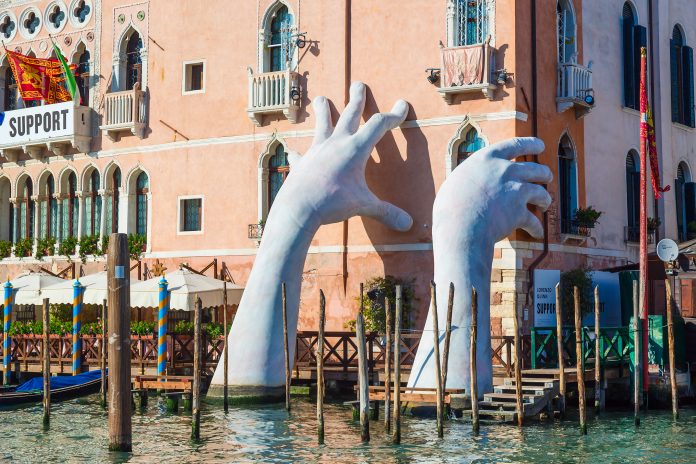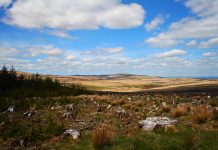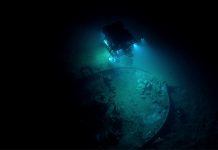Here, we touch upon the purpose of EUSEW and explore some new technologies and innovations that are happening in Europe, to stop and reverse climate change
The EUSEW Policy Conference in Brussels is a meeting place for energy experts and agencies, policymakers, private companies, NGOs, industry associations and the media. In the past, speakers and participants have come from city councils and European institutions, private companies and research organisations.
The intended point of this gathering is for all possible people to come together, to further strategise and discuss how to achieve energy and climate goals in the EU.
The theme of EUSEW 2019, which finishes today (20th June), is ‘Shaping Europe’s energy future’. The conference is one of the largest in Europe, focusing on key issues like renewables and efficient energy use, with sessions run by the European Commission amongst other central energy stakeholders.
Who won the EUSEW 2019 Awards?
1. Bardzour won in Engagement
An innovative response to island challenges in Le Port, La Réunion, France.
The Bardzour project, named after the prison where it is based, began in 2014 with the installation of solar panels on the former farming land around the prison, which houses more than 500 inmates on the outskirts of Le Port in the northwest of the island. Today, the solar farm supplies enough energy to meet one-third of Le Port’s needs, including providing electricity to around 4,000 households each year, and brings savings of nearly 9,000 tons of carbon emissions annually.
La Réunion is a volcanic island in the Indian Ocean where the population is growing, and land is increasingly scarce. A local project is addressing this problem by transforming unused land around a prison into a solar farm, producing clean electricity for the nearby city of Le Port and helping to reduce carbon emissions.
For Eric Scotto, the co-founder and Chairman of Akuo Energy, the renewable energy company behind the project, the best way to prepare for the future is to exploit the island’s most available resource: the sun.
By harnessing solar power, the project has been able to secure an autonomous supply of electricity for the community around Bardzour and, in this way, opened up new possibilities for agricultural production.
Each year, 6-12 men nearing the end of their prison sentences are trained on the farm, with some going on to work for Agriterra after their release. To date, around 50 inmates have been trained through the project and, in total, it has helped to create nearly 300 local jobs. The prisoners have responded very positively to the opportunities provided thanks to the project.
Scotto said:
“For the first time we would give them responsibility, to learn a profession that might give them the possibility to have a job when they leave the prison.”
2. Avià won in Leadership
Nestled in the foothills of a Catalonian mountain range is a small village that packs a big punch when it comes to Europe’s sustainable energy future. Avià is showing Europe how citizens in local communities can engage in the energy transition, helping the EU achieve its climate and energy targets. In 2015, the local council in Avià adopted an easily implementable blueprint for boosting renewable energy, energy efficiency and environmental protection. This cut down its carbon emissions and lowered its demand for expensive fossil fuels, benefitting both citizens and local authorities.
Josep Subirana, town councillor in Avià, Spain and motivator of the initiative, said:
“Our sustainability measures are designed to give direct environmental and economic benefits to the people who live in Avià – that is why our energy transition is hugely popular and a real inspiration to other local councils across Catalonia and wider Europe.”
Avià’s public sector alone saves over 300,000 kilowatt-hours in energy each year – a 60% reduction compared to before 2015. This means that the village saves €50,000 and 90 tonnes in carbon dioxide emissions a year, not including private buildings.
In public buildings, solar panels were installed, lighting was switched to LED, buildings were better insulated and only 100% renewable energy companies could bid to supply electricity for public buildings and lighting in the village. Meanwhile, the village has been planning a joint purchase of solar panels for citizens who cannot fit them on their roofs.
With its easily-replicable model, strong citizen engagement and bold political decisions, Avià is clearly doing as much as it can to become as efficient and sustainable as possible, providing a model for villages to help the EU achieve its climate and energy targets.
3. E=0 & Transition Zero won in Innovation
Energy efficiency retrofitting in buildings – swapping old solutions for new and more energy efficient ones – can be complicated and expensive. But, with the need to boost energy efficiency in buildings to meet the EU’s climate and energy goals, and with the savings it brings for heating bills, it is becoming increasingly essential.
One innovative project – supported by the EU’s Horizon 2020 Transition Zero and Interreg E=0 programmes – is helping to overcome the hurdles to energy efficiency retrofitting by creating a comprehensive, quick, one-time home upgrade programme for social housing. Based in Paris, France, E=0 & Transition Zero’s goal is to make energy efficiency retrofitting an easy process and as low cost as possible.
To achieve the affordable cost objective, tenants make a change in the way they pay their bills: prior to the retrofit, tenants paid their rent to their housing provider and their energy bills separately to a utility company. Afterwards, much less is paid to the energy utility and the savings are redirected to the social housing provider to cover the cost of the retrofit.
To reach the goal of a convenient energy efficiency upgrade, a team of experts take a 3D scan of the building to record its dimensions. Back in their offices, they design a new, prefabricated insulated house facade, a new insulated roof equipped with solar panels and new smart heating and cooling systems.
Sébastien Delpont, manager of the market development team in France said:
“We want the customer experience to be great. The meticulous planning and offsite manufacturing minimises the time of contractors onsite, residents can remain in place and major works are completed within 1 to 2 weeks.”
The initial concept was born in the Netherlands, where 4,500 homes have successfully been retrofitted to date. In addition to the 4,500 houses delivered in the Netherlands, in France 6,550 retrofits are planned, and in the UK 155 homes are set for a retrofit.
4. ClimACT won in Youth
Schools are paving the way to low-carbon economy in Lisbon, Portugal. Young people in Europe today are increasingly getting involved in the fight against climate change, especially in terms of concrete actions that they can take in their everyday lives. An innovative Portuguese project is harnessing this enthusiasm to help schools reduce their energy footprints and encourage behavioural change across school communities.
Based in Lisbon, ClimACT is working with some 14,000 students, 2,000 parents and over 1,000 teachers in almost 40 schools in Portugal, Spain, France and Gibraltar. Funded through the Interreg programme (Interreg Sudoe) with a budget of €1.3m, the project targets children and young people through to university level, helping students gain the skills they need to take ownership of energy use in their schools.
The first step taken by ClimACT following its launch in 2016 was to conduct audits of energy use in all the participating schools. The project team then created a benchmarking platform which allows the schools to compare their energy use with that of others. Experts worked with schools to evaluate those findings and make a recommendation on changes they could make.
ClimACT then set up a resource-matching platform, giving schools access to innovative business models and strategies that could help them pay for structural changes—for example, connecting them with companies willing to pay for insulation and letting the schools reimburse the money through energy savings made over time.
The goal of the Low-Carbon Committees and the Brigade is to help students understand their energy bills, energy and water consumption, and introduce all the ways of how people can travel to school. This understanding, the project team hopes, will be one of its main legacies.
Marta Almeida, a researcher at the Instituto Superior Técnico in Lisbon and ClimACT coordinator said:
“A very important achievement is to give skills and knowledge to students and teachers in order to continue after the end of the project.”
Editor's Recommended Articles
-
Must Read >> The UK must cut emissions, not forests















